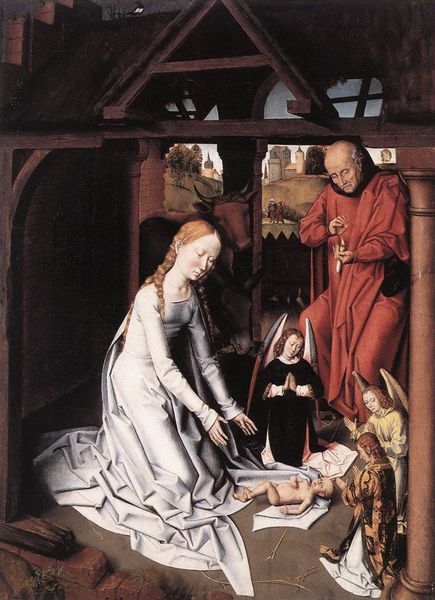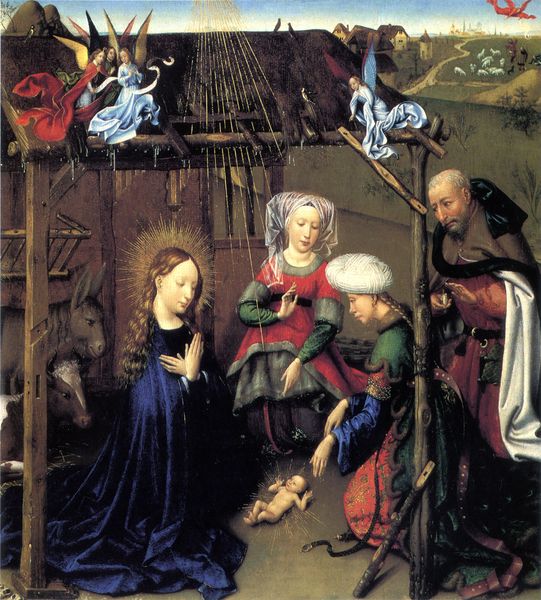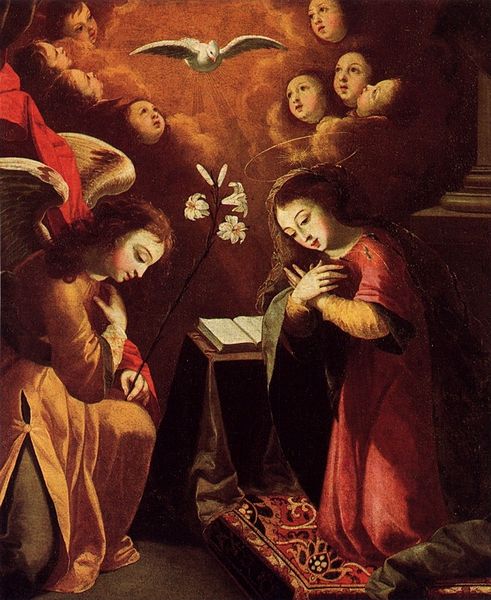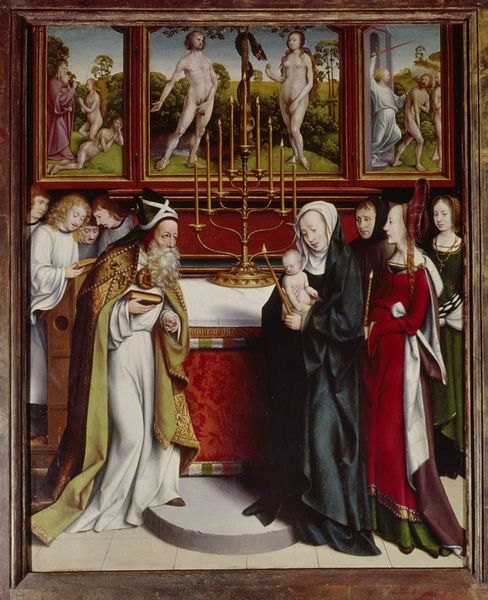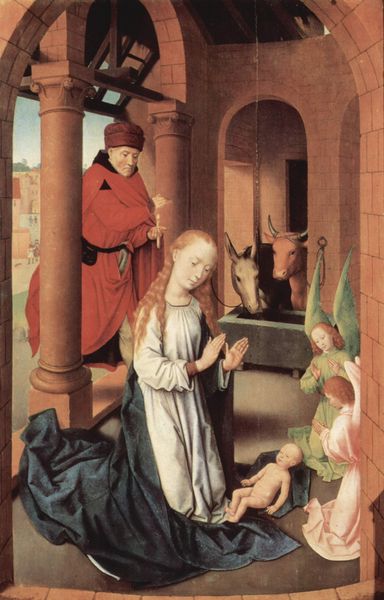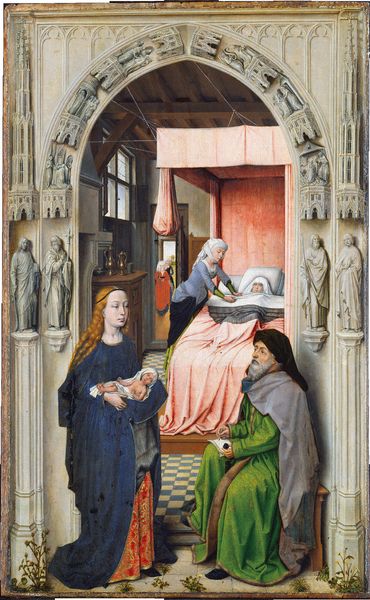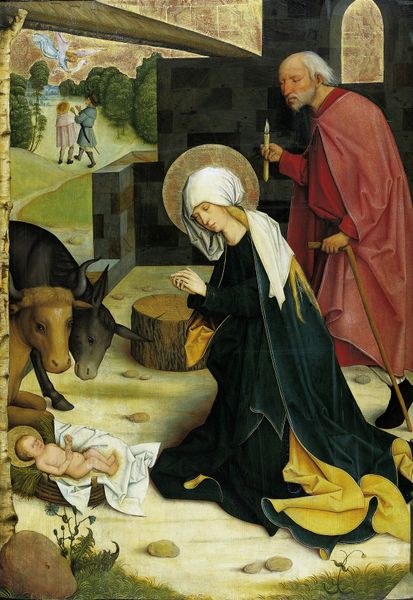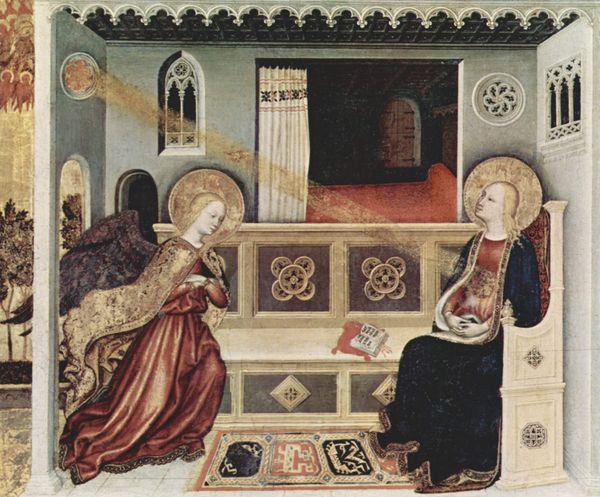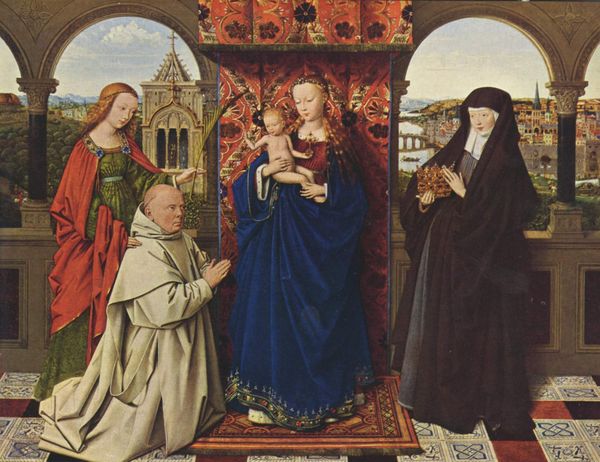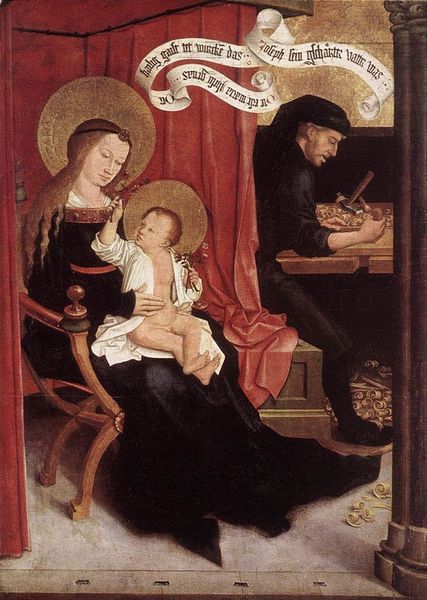
The Announcement to Anne and Joachim 1510
0:00
0:00
bernhardstrigel
Thyssen-Bornemisza Museum, Madrid, Spain
painting, oil-paint
#
portrait
#
narrative-art
#
painting
#
oil-paint
#
oil painting
#
christianity
#
history-painting
#
northern-renaissance
#
portrait art
#
fine art portrait
Copyright: Public domain
Editor: So, here we have Bernhard Strigel's "The Announcement to Anne and Joachim" from around 1510, made with oil paint. It feels really serene, but also a bit... humble. I'm interested in what might have been going on behind the scenes during its making. What do you see in this piece that speaks to you? Curator: As a materialist, I'm drawn to the actual physical labor and resources involved. This oil paint, for instance. Where did Strigel source his pigments? What kind of workshop structure was in place to facilitate a painting of this scale? Consider the role of apprentices grinding pigments and preparing the wooden panel. The use of oil, rather than tempera, signifies a shift in artistic practices and opens a window to trade routes and available technologies. Editor: That's interesting. I hadn’t considered the supply chain aspect. It makes me think about the craftsmanship involved and who benefited. Were these materials readily available or were they luxuries only certain artists could afford? Curator: Exactly! Who had access? The patronage system shaped artistic production. Strigel wasn’t just expressing personal creativity, he was fulfilling a commission, potentially for a wealthy merchant or a religious institution. The very choice of subject matter—a biblical narrative—served a specific ideological purpose within the society of the time. Think about what messages those materials help create! Editor: It changes how I look at it, less about pure artistic expression and more about how the materials and making were tied into the social and economic systems of the time. The Northern Renaissance wasn't just about art, but a whole network of producers and consumers, right? Curator: Precisely. It's about challenging that "high art" status by looking at the processes, the labour, and the socio-economic conditions that made its creation possible in the first place. What did those laborers get paid? What tools did they use? This challenges the art's pristine appearance. Editor: I see that! It helps bring a richer, almost hidden history to light. Curator: Exactly. Considering materiality opens this world into the tangible world in which the painting was constructed.
Comments
No comments
Be the first to comment and join the conversation on the ultimate creative platform.
